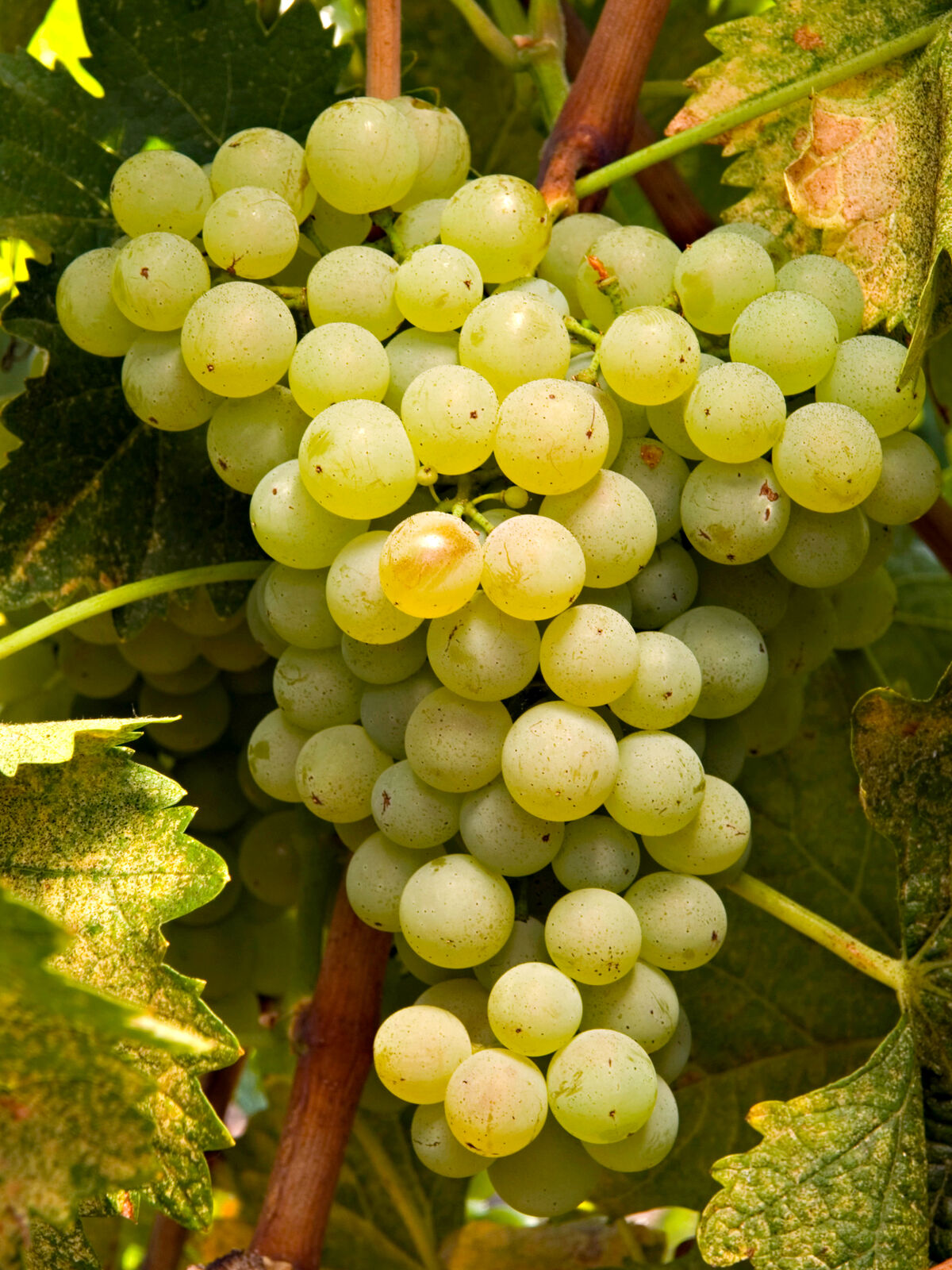Vermentino
Vermentino, with its bright acidity, aromas of citrus leaf and mineral, and refreshing finish, has become a favorite of Tablas Creek VINsiders and restauranteurs alike. Its story, however, does not originate in Châteauneuf-du-Pape, and unlike most of Tablas Creek’s white varietals, it is a grape that is more commonly seen on its own than in blends.

Vermentino in the Old World
Vermentino likely evolved in Italy. It appears in the written record there from the 17th Century in Liguria, Tuscany, and (especially) the island of Sardinia. As is true for many Mediterranean grapes, Vermentino is known by several other names, including Pigato, Favorita, and (in France) Rolle. Italy's 8,725 acres are the most in the world, with France (8,530 acres) second. California's 118 acres (all from Tablas Creek's nursery) are a distant third.
Vermentino's best known examples today still come from northern Italy (particularly in the region of Liguria) and the island of Sardinia, where the wines are crisp, citrusy and generally unoaked. It is also the most widely planted white grape on the French island of Corsica, where high altitude and hot climate vineyards produce more full-bodied wines with heady floral aromas.
On the French mainland (where the grape is known as Rolle), it is found in Côtes de Provence and, increasingly, in Languedoc, where it has become a critical component of many Provencal rosés.
Vermentino at Tablas Creek
Although Vermentino is not a Châteauneuf-du-Pape grape varietal, we imported it at the recommendation of the Perrins’ French nurseryman, who believed it would thrive in the rocky limestone soils of Paso Robles. We brought the cuttings in and entered them into quarantine at the USDA station in Geneva, New York. In 1993, they were declared virus free and released to us.
We propagated the vines in our nursery, and planted about an acre of Vermentino on an east-facing slope near Adelaida road in the northern portion of the property. As the nurseryman predicted, it has indeed thrived here, and in 2008 we planted another two acres at the western edge of the property.
Small quantities of Vermentino were included in our early white blends. However, we found it too distinctive to fit seamlessly into our blends, and since 2002 we have bottled it on its own. We used the Italian name for the grape instead of the French one because Wild Horse Winery (who bought cuttings from us) registered the grape as Vermentino, and, with the exception of a few grapes that have been grandfathered in, the BATF does not permit multiple names for the same grape.
In the vineyard, Vermentino is one of the easiest grapes to grow. It is vigorous, productive, resistant to drought, and ripens early in the harvest cycle. In the cellar, we ferment it in stainless steel tanks and often prevent it from completing malolactic fermentation. Both procedures serve to emphasize the grape’s natural minerality and retain its bright citrus character of the wine. For the same reason, we have bottled Vermentino exclusively in screwcap since the 2003 vintage.
Flavors and Aromas
Vermentino wines are a pale straw color and relatively low in alcohol, with crisp acids, citrus-leaf aromatics, and pronounced minerality. In the mouth, Vermentino shows flavors of green apple and lime, heightened by refreshing acidity, good richness and medium body. The wine’s crispness makes it a delicious accompaniment to fresh seafood, oysters on the half shell, or grilled Mediterranean vegetables.
This article originally appeared in one of our newsletters. Each newsletter, we spotlight the history and characteristics of one of our Rhone varietals. You can sign up for our mailing list.
You can view a one-minute summary of Vermentino on our YouTube page.
You can go back to the summaries of the different Rhône grape varietals.
